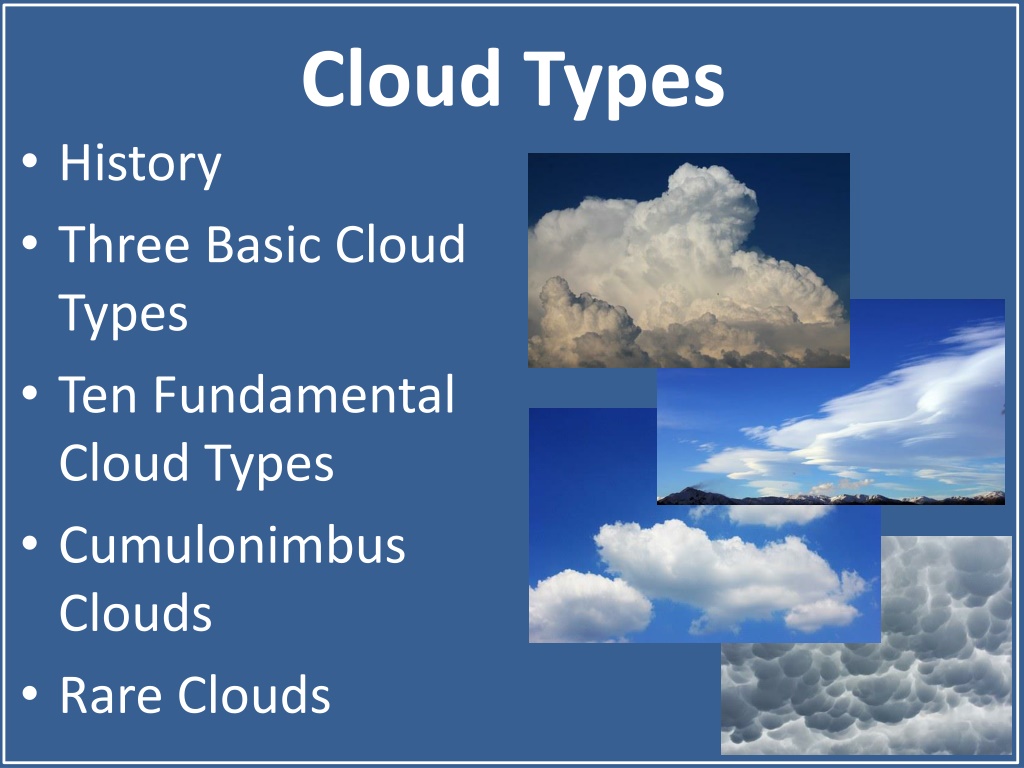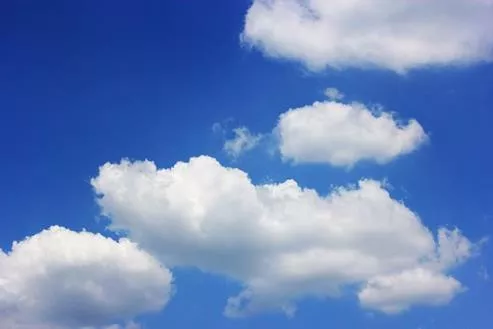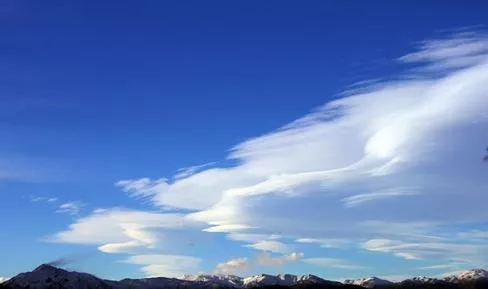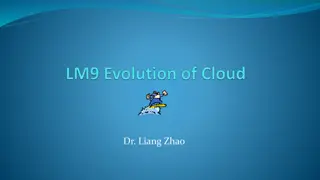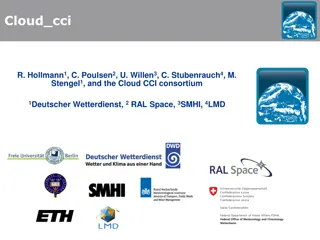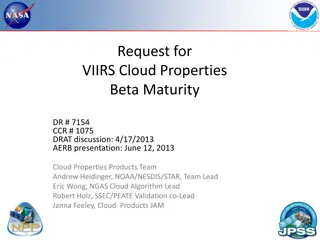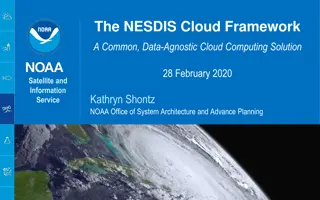Cloud Types
Discover the three basic cloud types - Cumulus, Stratus, and Cirrus. Learn their characteristics, formations, and significance in weather forecasting. Explore the uniqueness of each cloud type through insightful visuals and explanations.
Download Presentation

Please find below an Image/Link to download the presentation.
The content on the website is provided AS IS for your information and personal use only. It may not be sold, licensed, or shared on other websites without obtaining consent from the author.If you encounter any issues during the download, it is possible that the publisher has removed the file from their server.
You are allowed to download the files provided on this website for personal or commercial use, subject to the condition that they are used lawfully. All files are the property of their respective owners.
The content on the website is provided AS IS for your information and personal use only. It may not be sold, licensed, or shared on other websites without obtaining consent from the author.
E N D
Presentation Transcript
Cloud Types History Three Basic Cloud Types Ten Fundamental Cloud Types Cumulonimbus Clouds Rare Clouds
TeachWithFergy Preview File Please enjoy this preview of your Student Version of the lesson. I ve created this PDF for ease of viewing and to decrease the file size but of course, your lesson will be in PowerPoint format. - Some slides appear blank because they have been removed. - Student versions have portions of the text removed which is given in the teacher version and appear as ______ - Other slides may have ........... on them, this represents writing that has been removed.
Luke Howard Amateur meteorologist Made medicines for a living ______________ Three general types Cumulus Stratus Cirrus SEE HOW YOUR VIDEOS ARE EMBEDDED INTO THE LESSON. CLICK THE IMAGE IN SLIDESHOW MODE
Three Basic Cloud Types ______________ Stratus layer in Latin Cirrus curl of hair in Latin SEE HOW YOUR VIDEOS ARE EMBEDDED INTO THE LESSON. CLICK THE IMAGE IN SLIDESHOW MODE
Cumulus Familiar cloud puffs Look like cotton balls When they get bigger and thicker, and turn gray instead of white, rain is coming ______________
Stratus ______________ Fog when very low Drizzle or light snow possible Altitude: <2000 m (6500 ft)
Stratus Formation Warm, wet air flows into an area that has been cold ______________ Water vapor condenses into droplets, which form a cloud Cloud thickness depends on How much water is in the air How big the temperature difference is between warm and cold air
Cirrus ______________ Horizontal and vertical fall streaks from snow and ice falling out of clouds and evaporating Form in good weather High altitude: >6000 m (20000ft)
Ten Fundamental Cloud Types Stratus Cumulus Stratocumulus Cumulonimbus Nimbostratus Altostratus Altocumulus Cirrus Cirrostratus Cirrocumulus Low Atmosphere: <6,500 ft (2,000 m) Middle Atmosphere: 6,500 to 23,000 ft (2,000 to 7,000 m) ______________ VIDEO HAS BEEN REMOVED
Ten Fundamental Cloud Types ______________ Stratocumulus = stratus + cumulus Cirrocumulus = cirrus + cumulus Cirrostratus = cirrus + stratus Cumulonimbus, altocumulus = cumulus Nimbostratus, altostratus = stratus
Cumulonimbus Storm Cloud ______________ Dense, fluffy tower/mountain, stretches from low atmosphere to high atmosphere Top smooth or wispy, flattened into anvil shape Virga
Cumulonimbus Anvil shape
Rare Clouds VIDEO HAS BEEN REMOVED 3 Strange-Looking Kinds of Clouds 7 Rare Cloud Types
